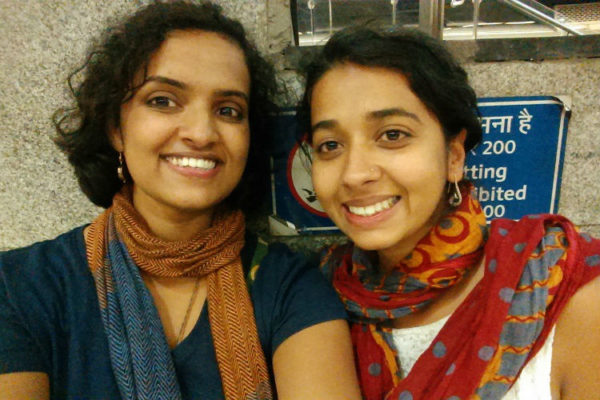“These women are role models. This is an investigation into why very few women enter science. And we are looking for answers,” says Aashima Dogra.
Sushama Agarwal has been a mathematician at the Ramanujan Institute for Advanced Study in Mathematics at the University of Madras in Chennai for almost two decades. Her expertise lies in “functional analysis”, a branch of applied mathematics.
Sushama is also possibly, one of the first two blind students to obtain an PhD from IIT-Madras. Though she wasn’t born blind, a genetic eye disorder eroded her vision by the time she was pursuing her MSc.
Taking “one step at a time”, each full of effort, she completed her doctorate in 1996, and although finding a job was difficult, the then vice-chancellor of the UoM had a visually challenged student and invited her for an interview. When her responses satisfied them, they appointed her.
Sushama’s inspiring story is part of Nandita Jayaraj and Aashima Dogra’s “The Life of Science” (TLoS) project. Each story published on the TLoS website highlights the early life, passions and accomplishments of these women in a lucid manner.
While working as science writers for children’s magazine four years ago, Aashima and Nandita realised that there was very little information available about women scientists, neither in contemporary research nor in history.
The duo, who now freelance, started TLoS in February this year.
“We did not want to just focus on women who are famous, instead, bring out stories of professionals from different backgrounds and profiles,” says Nandita.
So far they have interviewed nearly 35 women across the country. From a social scientist in IISER, Mohali (Punjab), to a biophysicist at the Central Leather Research Institute in Chennai, from horticulturists at the Indian Agricultural Research Institute, Kalimpong (West Bengal), to an arachnologist (one who studies spiders) at the Union Christian College, Aluva (Kerala), the women they covered represent diverse branches of science.
“These women are role models. This is an investigation into why very few women enter science. And we are looking for answers,” says Aashima.
Of their most important but – unsurprising – findings, is that a majority of women had the support of their families, which helped them in their careers.
“Another thing we noticed was that 50% of women we interviewed had spouses in science,” says Nandita.
The stories of these women are not just inspiring, but are often chronicles of frustrating unfairness.
It begins with a “dangerous” discrimination right at the entry level, says Aashima.
During interviews women are often told that they’d get pregnant in a few years, thus implying they’d become unproductive.
But even for those who gain entry into the hallowed ivory towers of science in India, going on field work to forests or reserves is a difficult because of obstacles often placed by others.
Nandita recalls that a researcher was once asked to bring her father or brother with her on field work.
Another major problem is the low number of women who make it to the decision-making levels of institutions.
Aashima says, “Women’s opinions are not even heard, they are not taken seriously. There is a culture of indifference.”
She witnessed this personally once when she went to a conference to interview a researcher. The woman was on stage and was to make a 15-minute presentation on her research.
No sooner had she begun than the man chairing the session initiated a discussion on her research with a member of the audience. The two men cut her out totally. “She was unsuccessfully attempting to weigh in. But they took the room for themselves,” Aashima recalls.
Convincing women in government institutions proved to be a challenge because even when such organisations don’t have a “secrecy blanket” around them, they generally “aren’t very welcoming”.
But Kriti Faujdar who hails from Vaishali in Bihar and is a computer scientist in ISRO in Hassan, agreed to an interview.
“My whole family watches the rocket launches live on TV. We are three sisters and our family background is not so advanced. Some other families say that girls should not work or go out of the city, but my father has never put any restrictions. I never had to fight to work, in fact sometimes I had to fight to not work,” she told TLoS.
Other employees however, fear the implications of an interview. One woman in a government research body they interviewed did not want any material related to her work to be published. So the piece needed major edits and the director of the institute was unresponsive. In the end, they had to drop the story.
“Institutions need to open their doors for outreach,” says Aashima. Stating that the public have the right to know about their work, she adds, “Most of the research in the country is funded by taxpayer’s money. When science comes out, it affects everybody.”
Aashima and Nandita are also facing a fund crunch and have started a crowdfunding initiative to sustain TLoS until next year. To contribute, go to: https://www.bitgiving.com/labhopping



Leave a reply